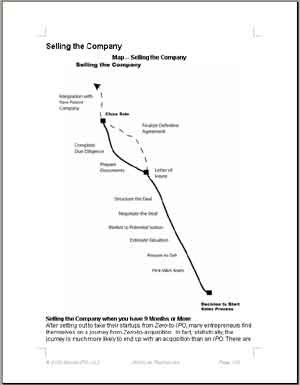 In
an ideal world, one of your strategic partners will approach
you out of the blue with an enticing bid to acquire your company.
This does happen but donít hold your breath as you wait --
most entrepreneurs find that they have to go out, target potential
acquirers and actively sell the company. In
an ideal world, one of your strategic partners will approach
you out of the blue with an enticing bid to acquire your company.
This does happen but donít hold your breath as you wait --
most entrepreneurs find that they have to go out, target potential
acquirers and actively sell the company.
"If you do receive an unsolicited
bid, donít just accept it, even if you think itís generous
Ė the buyer will be expecting to go through the negotiation
dance and immediate acceptance may raise some suspicion. Express
your interest, bring in some specialist help and discretely
approach other potential acquirers. If thereís one buyer interested
in your business, then chances are that there are other interested
parties out there, many of whom will be more likely to improve
their offers in the face of competition. Ideally, youíll get
into an auction situation with two or more companies and youíll
see the initial offer price increase significantly. Sellers
that accept an unsolicited bid seldom recognize full value
for their businesses."
".. statistically, the journey is much
more likely to end up with an acquisition than an IPO. There
are many reasons for this -- the most obvious being that most
markets can only support a small number of competitors, and
these companies swallow up all the smaller new entrants. "
There are good times and not so good times
to sell your company. The ideal time is when the buyers are
buying and the company is up-trending. The worst time is when
youíre in trouble and the buyers are heading for the hills.
Positive momentum like sales growth, the closing of distribution
partnership deals and the release of a new product can really
increase the level of interest and value.
If you want to get the best deal from an
acquisition you need a good plan, an experienced team, time,
money and more than a little luck. The team should include...Ē
This chapter includes coverage of
the following topics:
- Why a merger or acquisition is often
more appealing than an IPO
- Selling the company when you have sufficient
time
- Selling in a hurry
- The process of selling the company
- Picking your M&A team
- Preparing your paperwork
- Dressing the company up for sale
- Identifying buyers
- Approaching buyers
- Presenting to buyers
- Negotiating terms
- Agreeing terms
- Board & other approvals
- Preparing agreements
- Due diligence
- Closing the sale
- Integration with the parent company
|

